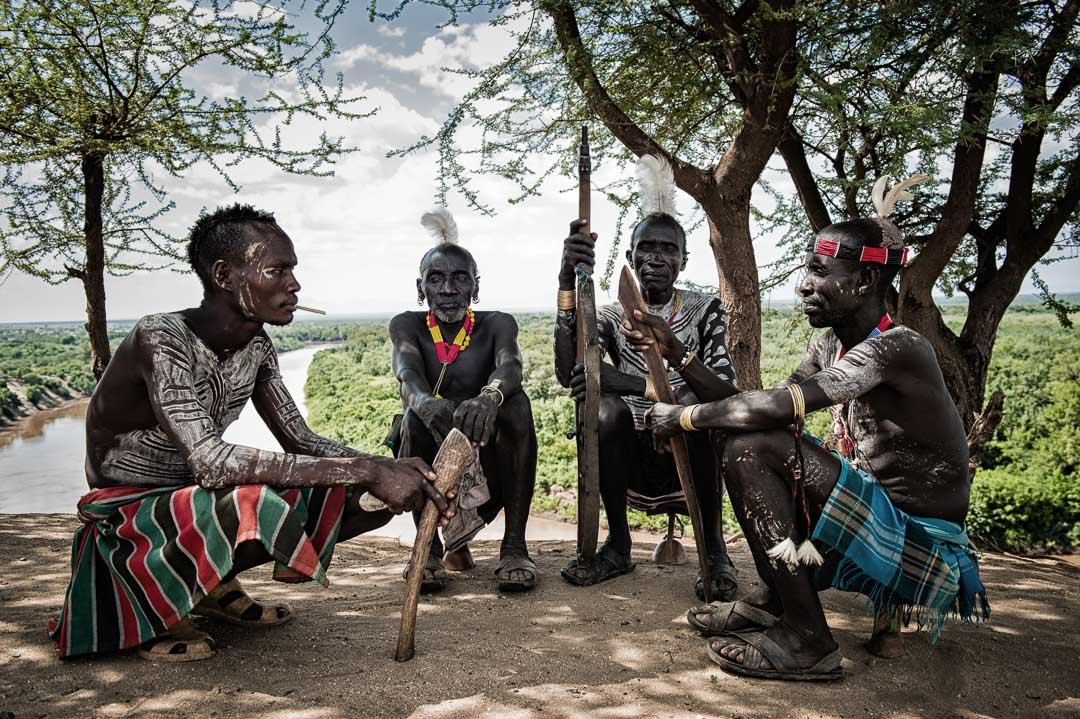The Omo Valley, in The Horn of Africa on Ethiopia’s southern border with South Sudan, is the traditional grazing lands to some of the most remote tribes on our planet.
It takes four challenging days by 4WD to reach deep into Surma - a government-designated collective title for similar tribes - Territory. Immediately, one is confronted with the stark, naked existence of these beautiful people being cajoled into ‘some-sort-of-civilised’ society.
“…one is confronted with the stark, naked existence of these beautiful people”
The Kara (also known as the Karo) are one the smallest tribal communities of the Omo Valley however they exude a confidence beyond their number. (Population est. <1,400.)
Whilst agro-pastoralists, the name Kara translates as ‘fish people’ from their traditional ways of spear fishing along the banks of the Omo River.
They live on the east bank of the Omo Valley opposite the Nyangatom but have close relations with the Hamar people - trading and sharing cultural and linguistic commonalities with the Hamar. The skull cap headpiece - at some point must have swapped between the Hamar and Kara men - and is now common amongst both lots of tribesmen.
Scarification plays an important role in Kara body decoration along with large colourful strings of beads sling around the necks of boys and girls and, mostly white, body paint accompanied by coloured dots on the face.
The Kara communities, due to their diminished number, no longer roam the savanna and, now instead, live in three villages with a more modern-day, formalised community structure and access to education (i.e. an international sponsored school that operates sporadically).
Through each village community, the young Kara, are encouraged to retain and learn past customs and this younger generation are proud to share, in schooled English, their rich community culture.











